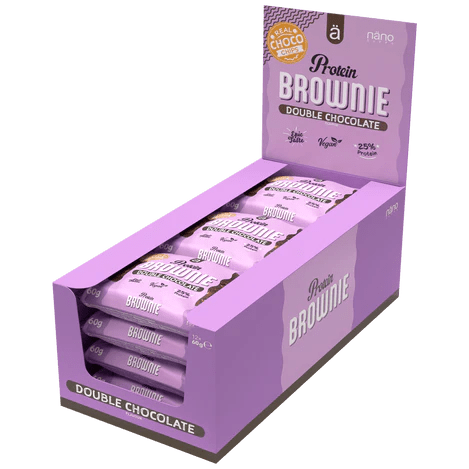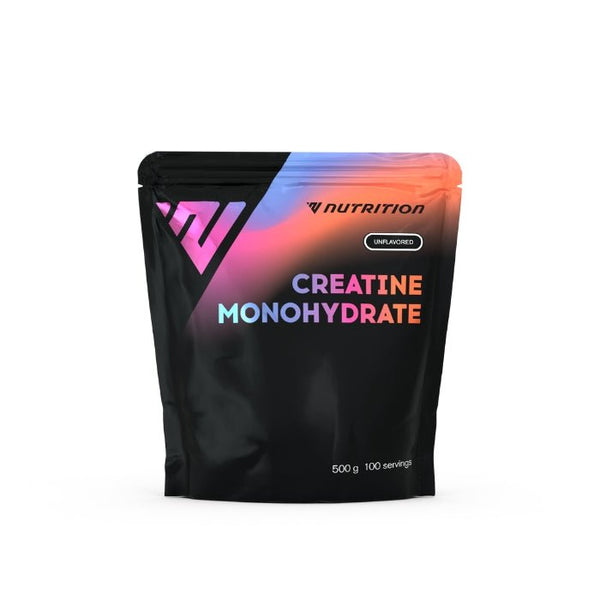Glucomannan, derived from konjac root, is a valuable source of soluble fiber that can improve intestinal health, normalize blood sugar and lipid levels, and help with other ailments and diseases. It can also help you get rid of excess body fat and maintain a slim body by normalizing the levels of hormones responsible for satiety and appetite.
You need to eat less to get rid of excess body fat. Quite simply. However, if you eat very little, it can be very difficult to get the amount of fiber you need. Fiber deficiencies, in turn, lead to more hunger, but more hunger means you eat more.
What to do?
Glucomannan - the soluble fiber from konjac root - is one of those supplements that meets both of the above requirements - it provides enough fiber, as well as a fuller feeling of satiety. In addition, it has a positive effect on your health in many other ways.
What are Soluble Fibers?
Soluble fiber is a type of water-soluble, so-called "complex" carbohydrate (one whose complex molecular structure is more difficult for the human body to break down). Upon contact with the liquid, the soluble fibers form a viscous gel. For example, fruit pectin is used to thicken jams and similar products, while xanthan gum is used as an emulsifier, giving foods a creamy consistency.
Soluble fiber is a great "food" for bacteria, which is why it is also called prebiotics. Bacteria in our gastrointestinal tract diligently ferment soluble fiber, creating valuable nutrients as by-products ... and not quite the stomach gases we want.
Soluble fiber is found in foods such as:
- beans and legumes;
- cereals, including oats, rye and barley;
- individual fruits, including plums / prunes, apples, pears, berries and bananas;
- certain vegetables, such as onions, cabbages, Jerusalem artichokes (roots / rhizomes often contain a lot of soluble fiber);
- individual seeds, including Cha and yarrow seeds.
From konjac root to glucomannan
Cognac grows (Amorphophallus konjac) root like many other rhizomes contains a lot of soluble fiber. These fibers are used in the production of glucomannan (GM) supplements.
Cognac root
Konjac is also found in East Asian cuisine, often in the form of shirataki noodles or as a jelly, which is cut into slices and served with sauce. However, it is most often said to have a gelatin-like consistency rather than taste, as it usually absorbs the taste from other products in which it is cooked, marinated or soaked.
Sashimi konnyaku (konjac sashimi)
Flour and powder are industrially obtained from konjac food, as well as such end products as noodles, jellies and even lollipops, which we do not recommend consuming.
How does glucomannan work?
Although cognac has long been used in China, Japan, and Southeast Asia as both a food product and a traditional remedy, Western researchers have only been interested in the beneficial effects of GMs on human health since the 20th century. 80s.
Absorbs water
Konjac flour / glucomannan or powder has strong absorbent properties - it is able to absorb significant amounts of water.
Helps us eat longer
Because GM is able to bind so much water and form a gel, it helps us feel better fed. This means we can eat less but feel fed for longer. On the other hand, less calories means a decrease in body fat.
Studies looking at including GM in a low-calorie diet have consistently found that participants in groups that use GM manage to burn more body fat than groups that do not take in extra fiber. One of the following studies (Birketvedt GS, et al. 2005) GM group members lost an average of 0.8 kg more over a 5-week period than the control group.
The feeling of satiety is not always unambiguous - a full stomach does not mean that a person feels eaten. As people who have once followed a diet know, a stretched stomach (for example, because of the amount of water you drink) does not always mean that you will not want to eat. A "mechanically" full stomach does not always mean a "real" feeling of satiety.
However, in a study of patients with type 2 diabetes (Grill, 2010), it was found that the presence of major hunger signaling hormones (eg ghrelin) decreases after a GM-containing meal. GM is thought to "confuse" abdominal and brain receptors, informing them that less food is enough to achieve a feeling of satiety.
Better carbohydrate tolerance and lipid profile
In addition to physically filling the stomach, GM also improves satiety and optimizes the utilization of body fat reserves by normalizing blood sugar levels and improving the lipid profile.
In one study (Keithley and Swanson, 2005), it was observed that 2-4 g GM per day improved participants' weight loss results, while also providing other positive effects, including blood lipid profile and carbohydrate tolerance, as well as satiety. The body's ability to optimally process starchy products means normalized insulin sensitivity, which in turn means better control of appetite, less change in blood sugar levels and reduced appetite between meals.
One of the first discoveries concerning GM (Walsh, 1984) indicated decreased serum cholesterol as well as LDL (low density lipoprotein) cholesterol. And compared to one of the most popular products containing soluble fiber, yarrow seeds, GM's results in reducing lipids in the blood are generally better.
Digestive system health
The health of our digestive system, including gastrointestinal motility (the ability to empty the stomach) and healthy bacterial flora, is an excellent indicator of overall health. In addition, it should be noted that gastrointestinal dysbiosis or bacterial overgrowth / bacterial flora imbalance is closely related to obesity.
People who follow a low-carbohydrate diet are well aware of how difficult it is to achieve a normal bowel movement while the body adjusts to the reduced amount of cereals and other fiber sources in the diet. With reduced food intake, achieving a normal bowel movement can be a major challenge.
Some people who follow such diets include celandine seed husks or bran as a solution to the problem of constipation. Admittedly, in this case, GM could be a better choice due to its soluble fiber content.
Apart from regular bowel movements, a study (Chen, 2006), a significant beneficial bifidobacterium was also observed in the GM group. lactobacilli and an increase in the total number of bacteria in the gastrointestinal tract. It was also observed that the consumption of GM in the diet promotes intestinal fermentation, as indicated by decreased faecal pH.
Sores
Probiotics (eg sauerkraut, kimchi, miso, etc.) have been observed to reduce pump formation when used in combination with GM. True, they should be used in food, not on the face.
Malignancies
A review of any food or food supplement would not be complete without assessing the impact of that product on oncological diseases. The beneficial effects of GM on the gastrointestinal flora may help to reduce the risk factors for precancerous cancer of the colon.
Glucomannan and safety
As GM expands rapidly in contact with water, there have been documented cases of people being choked with GM powder or GM lollipops trying to swallow them dry. To illustrate this, all you have to do is imagine a balloon inflating in your mouth and neck.
Therefore, it is advisable to take GM either as a food (eg as shiracaki noodles or konjac jelly in your favorite Korean or Japanese dishes) or as a powder, adding it to the food or dissolving it, for example, in a milkshake. GM capsules are also safe to use, but always drink plenty of water. Apart from this aspect, GM is safe for both adults and children.
Start small
Start with small doses of GM. In clinical trials, an average of only 1 to 3 grams per meal is most commonly used. We recommend that you take one, very small, dose a day at the beginning.
Excessive addiction to GM eating can cause bloating, flatulence and associated discomfort.
Konnyaku (konjac) jelly. It can be cut into small pieces or, for example, supplemented with a sprig of parsley.
Summary and recommendations
GM can improve several aspects of digestive system health, such as gastrointestinal motility (i.e., healthy and frequent defecation) and the health of the good bacteria that live in it.
GM is able to normalize blood sugar and lipid levels (eg serum cholesterol and lipoprotein).
GM also helps to reduce body weight by maintaining satiety for a long time and possibly affecting the hormones responsible for appetite.
For safety reasons, take GM with plenty of fluids.
Talk to your doctor to find out if you are taking any contraindications and if you have any swallowing problems.







